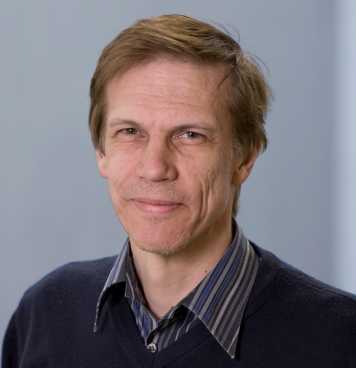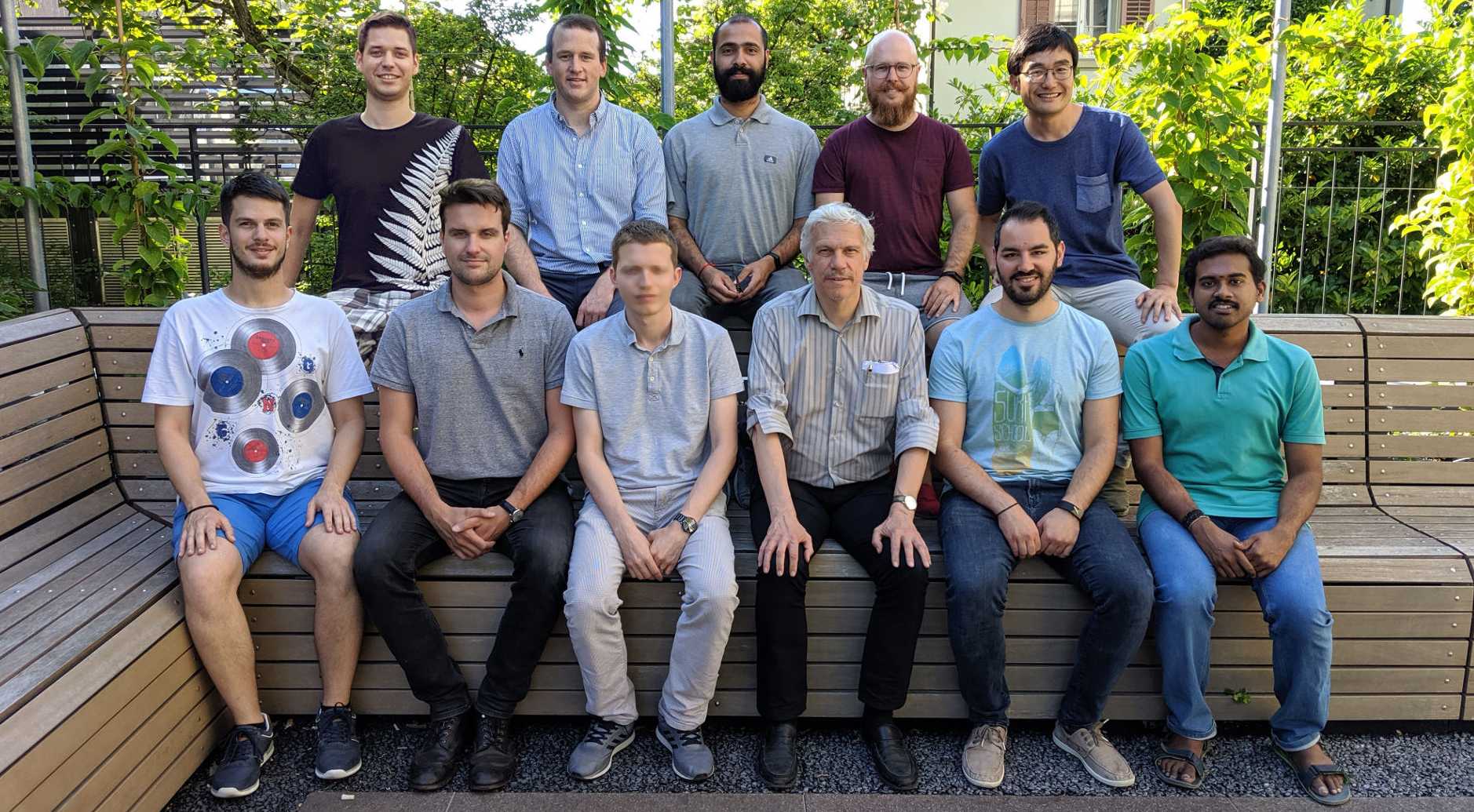"Our goal is to develop safe autonomous cars"
In our interview, Prof. Luc Van Gool, head of the Computer Vision Lab (CVL), explains how it has become much easier for a machine to recognize the content of an image in the last decade and how autonomous driving might be pushed forward over the next years.
Prof. Van Gool, what is your main area of research?

Our main area of research is Computer Vision, a sub-area of Artificial Intelligence (AI). With the help of a machine we try to automate tasks our human visual system naturally performs when we look at an image or video. The goal is for the machine to "understand" the information it "sees" in the image and to provide useful results based on the observation. Important sub-domains of Computer Vision include tracking and gesture analysis, object recognition and image-based retrieval as well as 3D modeling.
How important was the revolution brought about by Deep Learning for the evolution of Computer Vision?
Like in all other fields of signal processing – with the help of Machine Learning and in particular the neural networks of Deep Learning – it has over the last decade become much easier for a machine to recognize the content of an image. Computers are now able to generalize and recognize classes of objects, such as this is “a dog”, this is “a cat”, instead of particular or unique objects. The fields, in which Computer Vision is used, have become much wider than they used to be only a few years ago: first models of self-driving cars, more accurate diagnoses in healthcare, retail stores without cashiers or check-out or automated smart factories, to name only a few.
What brought you to this field? Why does it fascinate you?
I studied Electrical Engineering at the University of Leuven in Belgium. At that time, Computer Vision was developed in the faculties of Electrical Engineering. Universities who created computer vision labs more recently, typically have the department of Computer Science hosting them. Vision is our most important sense, since half of the brain functions are concerned with processing the information we see. This has always fascinated me. I was aware that when you can make a computer see, the applications are legion. This added to my fascination for the field.
What is the impact of your research on society?
The daily lives of today’s consumers are full of applications based on Computer Vision, e.g. the cameras of their mobile phones, which are now very good at automatic image enhancement or classifying the huge number of pictures we take by recognizing people and objects. Nowadays, the quality of a mobile phone is rated by the quality of the camera! Another very interesting research focus of my group, which might have a tremendous impact on people's lives, is autonomous driving. We enable computers to identify and to distinguish objects, such as other cars, traffic signs or pedestrians, and to act accordingly.

Which courses are you teaching this semester?
This fall semester, together with my colleagues Ender Konukoglu and Orcun Göksel, I teach the course "Image Analysis and Computer Vision" for students of different Master’s programmes, such as Electrical Engineering and Biomedical Engineering, but also Mechanical Engineering or Health Sciences. The interest in this field has grown enormously over the past years. All together we have more than 300 students taking this course each year.
Are you collaborating with other people at the Department of Information Technology and Electrical Engineering (D-ITET) or other departments at ETH Zurich?
Within D-ITET we have a common project with the groups of Luca Benini (Integrated Systems Laboratory) and Benjamin Grewe (Institute of Neuroinformatics) mapping Deep Learning efficiently onto hardware in order to build reliable neural processors. Our aim is to adapt Deep Learning algorithms so they can imitate the natural processing the brain is doing. Eventually, we would like to develop a very small low-power consumption device, which can think and see at the same time. In collaboration with the Automatic Control Laboratory (IfA) we develop the multi-robot and multi-agent systems for our RoboCup football team.
Apart from that, we have collaborations with the Department of Computer Science (D-INFK), e.g. with the Computer Vision and Geometry Group and the Computer Graphics Laboratory.
How do you like ETH as a research institution?
Being at ETH Zurich means that your visibility as a researcher is very good. It is a highly reputed school and you get in touch with a lot of excellent researchers and students. A great number of very successful spin-offs have come out of ETH, and this, in turn, has attracted a lot of international companies to open their representations or even headquarters in Zurich. I think, in Europe there are very few cities offering such a great list! As for our department, D-ITET is one of the driving forces for lots of current tendencies shaping our society, and we should be proud of it.
“D-ITET is an ETH "en miniature". It is great to be able to collaborate with colleagues in all kinds of interdisciplinary fields, be it neuro science, biomedicine, hardware or software”Prof. Luc Van Gool
What challenges do you face in the area of Computer Vision, in particular Autonomous Driving?
At the moment, only driver-assistance systems can be seen on Swiss roads, autonomous cars are still not allowed to circulate. In addition, people are not allowed to take their hands from the steering wheel. Apart from these regulatory challenges, bad weather conditions are an issue or very unusual situations, the computer has never "seen" before, e.g. decorated cars during carnival season.
Moreover, autonomous vehicles might cause more traffic jams since more people will be able to "drive" a car. We will have to make sure to avoid this by having the cars communicate with each other. The nationwide 5G coverage will also be very important in this context, not only for the cars to communicate, but also for the passengers who will use their "free time" in the car to download huge amounts of data for gaming, online reading etc.
Another challenge will be to improve neural network architectures. Deep learning may have automated the selection of features to be extracted, but the choice of the neural network architectures still misses a solid, theoretical foundation. First attempts to let the computer also decide on the used architectures show that these can be quite different from those thatare currently in use.
What exactly will you be working on over the next years to push forward Autonomous Driving?
In our group we will gradually start equipping a prototype of a driverless car with the necessary sensor technology, such as cameras, radar sensors, and GPS systems. We hope to be able to test this car on a special test track soon. Within our TRACE project (Toyota Research on Automated Cars in Europe) we will develop the control technology in our car.

When will we see the first autonomous cars on the streets of Zurich?
When you predict things, often the opposite happens, so we have to be careful here. The year 2023, stated by certain experts as the break-through of self-driving vehicles, is not likely. First, we might see partially autonomously driving cars on highways with less complicated traffic situations than in the city. Gradually the car will take over more autonomous tasks. With the TRACE project in collaboration with Toyota we follow the strategy of being safe matters most, not being the first on the market. Rushing into a new technology, where safety is of highest importance, would not be very wise.
Professors at D-ITET
In our interview series, professors at D-ITET give an insight into their research and personal motivation to go into academia.